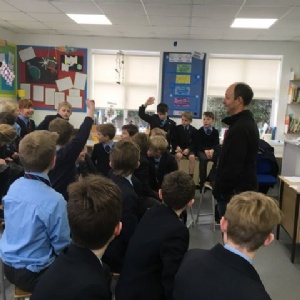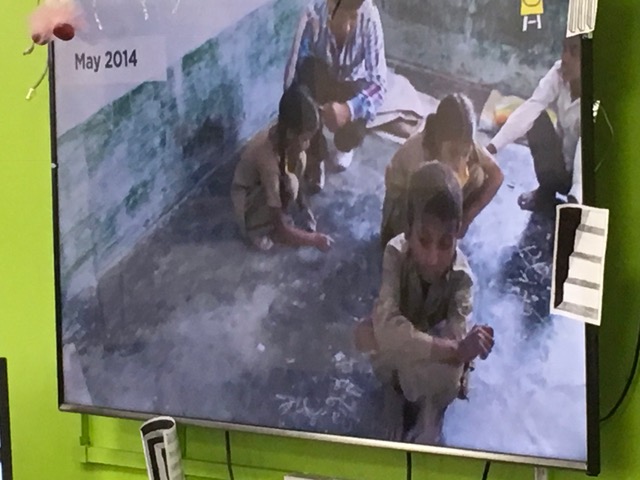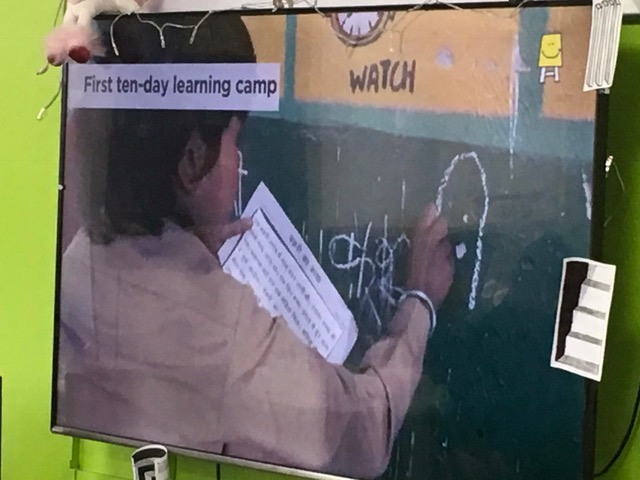Published on 05/03/18

On Friday 2 March, Dame B's welcomed Dr Ricardo Sabates from the University of Cambridge as our '1 o'clock talk' guest speaker to talk about his work in education.
Dr Sabates began his talk testing the children’s basic maths and reading skills, and explaining that there are 250 million children in schools across the world who are not learning. His work involves travelling to remote villages in Ghana, Ethiopia, India, Uganda and Rwanda to help children get a better education. He shared a video about Nancy, a schoolgirl from Northern India, who at the age of 9 could not read at all. By completing a learning camp, she was able to make immense progress in reading. Dr Sabates explained that his job involves working with teachers and ministers of education, explaining which are the best strategies to teach older children to read and write. After the talk, the children had lots of questions to ask.
Q & A session
Do you have to speak the languages of these countries? No, we have translators.
Do you teach the children? No, we help by talking to the minister of education. They can then send people to train teachers using our ideas. This has a bigger impact.
How did you get to do this job? I did A levels then at university I studied economics and became interested in the area of poverty. I then became interested in education, particularly for people living in poverty.
How do you know which schools need help? Remote areas in India need the most help. We are concerned about inequality and how this affects education. My job is to try to make things more equal with regard to learning opportunities.
How long do you spend in one country? Usually about one week. I Lived in Rwanda for three years.
How many children are usually in one classroom in Ghana? About 90 to 100 children of all different ages and ability. The children are not taught at the right level. The children are not learning new things. They just have to memorise things.
How big are classroom? Classrooms can be about the same size as your classrooms but sometimes they are outside under trees. In the video you saw children writing on the floor with chalk because they don’t have the same resources we have.
Why are there so many children who aren’t learning? There has been progress. In the 1990s there were many children not even attending school. Now they are in schools but aren’t learning. This is what we are working on with our research.
Do charities help? Yes, many charities help. There is also funding from the British government.
The children asked some interesting questions and had the opportunity to reflect on how lucky they are to learn in such an engaging way with so many resources to hand.


We would like to thank Dr Sabates for such a thought-provoking '1 o'clock talk' giving us an insight into global issues and hopefully inspiring us to continue this important work in the future.
Take a look at more news and blog posts from Dame Bradbury's.
